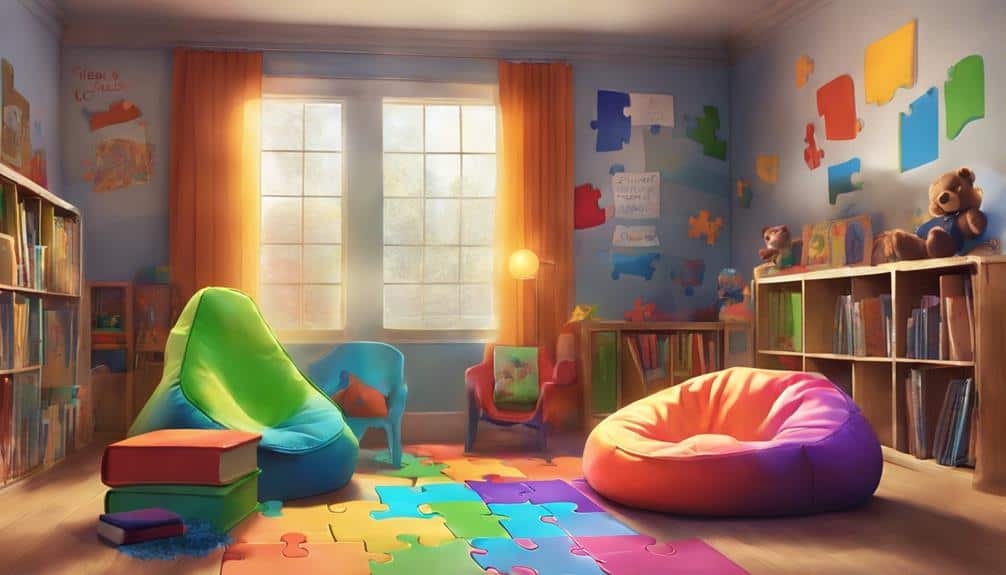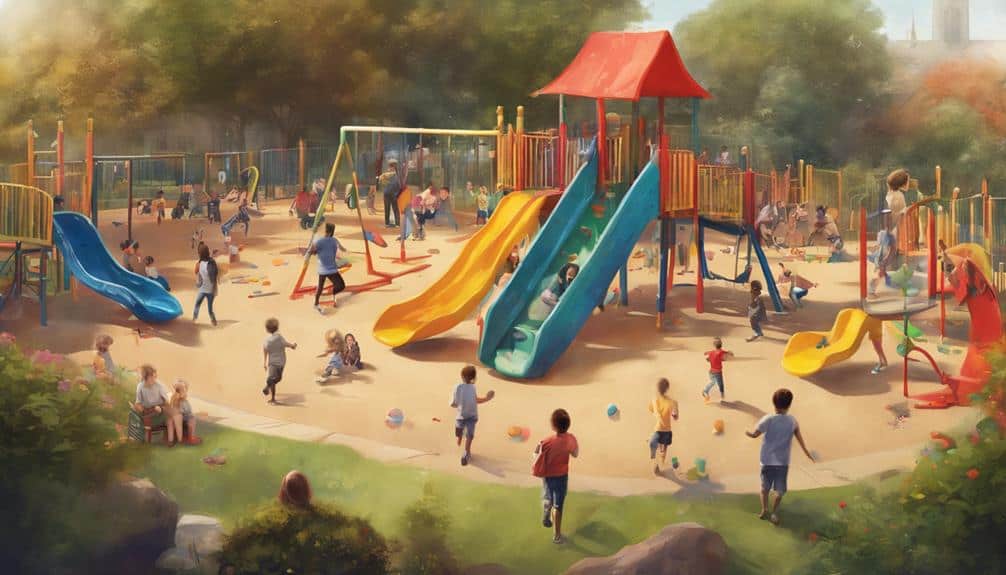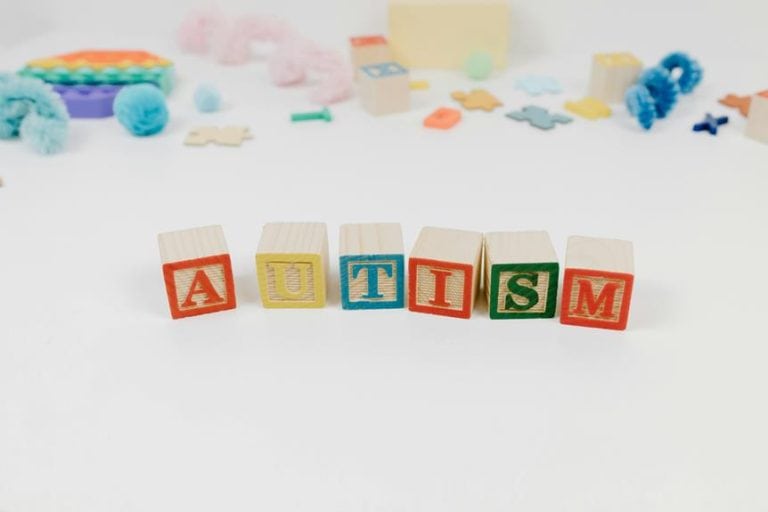Autistic Child Area Sign
Traversing through residential areas, one might come across a particular type of sign that holds significant importance for a specific group of individuals. Its presence subtly conveys a message of heightened awareness and consideration.
This sign, although simple in appearance, carries a weight of responsibility and care. It prompts drivers to adjust their behavior, but its impact reaches far beyond just road safety.
What deeper significance does this sign hold, and how does it contribute to fostering a more understanding and supportive community environment?
Key Takeaways
- Promotes safety and awareness in communities near areas with autistic children
- Encourages empathy and acceptance towards autistic individuals
- Enhances safety by alerting drivers to vulnerable individuals
- Fosters inclusivity and respect within the community
Understanding the Autistic Child Area Sign

When approaching an Autistic Child Area Sign, it's important to understand its significance in promoting safety and awareness in communities. These signs serve as crucial reminders for drivers to exercise caution and reduce their speed when entering areas where autistic children reside.
The distinctive yellow background and black text of the Child Area Sign guarantee high visibility both during the day and at night, enhancing safety measures in residential neighborhoods. Available in various sizes, ranging from 18 to 36 inches, and constructed from durable .080 Heavy Duty Traffic Grade Aluminum, these signs are built to withstand outdoor elements for long-term effectiveness.
Additionally, the reflective options such as Type IV High Intensity Prismatic or Type XI Diamond Grade further enhance the visibility of the Autistic Child Area Sign, making it easier for drivers to notice and adhere to the safety precautions indicated. By strategically placing these signs, communities can raise awareness about autism, reduce the risk of accidents, and foster a more inclusive environment for individuals with autism and their families.
Benefits of Displaying the Sign

Displaying the autistic child area sign is essential in promoting understanding and awareness within our communities.
It encourages empathy and acceptance towards children with autism, creating a safer and more inclusive environment for all.
Promotes Understanding and Awareness
By prominently featuring the Autistic Child Area Sign, communities can enhance understanding and awareness of the presence of autistic children in local neighborhoods. This sign serves as a visual reminder to residents and passersby that there may be autistic children in the area who require special attention and consideration. It prompts drivers to slow down and be vigilant, promoting safety around spaces where autistic children may be playing.
Additionally, the sign raises awareness about the unique needs of autistic children, fostering inclusivity and empathy within the community. By increasing visibility of locations where autistic children frequent, the sign contributes to creating a more supportive environment that prioritizes the well-being and independence of these children.
Encourages Empathy and Acceptance
Understanding and accepting individuals with autism is a key aspect of fostering a compassionate and inclusive community. Displaying an autistic child area sign, especially one made of Intensity Reflective Aluminum, can greatly contribute to promoting empathy and acceptance. Here are some ways in which it achieves this:
- Educates the Community: The sign serves as a visual reminder of the presence of autistic children in the neighborhood, encouraging people to learn more about autism and how to support these individuals.
- Fosters Inclusivity: By showcasing the sign, communities send a powerful message of acceptance and understanding, creating a more welcoming environment for autistic children and their families.
- Promotes Respectful Interactions: Seeing the sign can prompt neighbors to engage with empathy and kindness, fostering positive interactions with autistic individuals.
Design and Placement Considerations

Properly positioning Autistic Child Area Signs plays an important role in enhancing visibility and ensuring the safety of children in the vicinity. These signs, designed with a highly reflective yellow background and black text for high intensity visibility day and night, come in sizes from 18 to 36 inches and are made of .080 Heavy Duty Traffic Grade Aluminum. Placing them strategically near play areas or streets is essential for driver awareness and child safety. Following visibility guidelines, such as proper lighting and regular maintenance, is critical to maximize their effectiveness.
When considering the design and placement of Autistic Child Area Signs, it's crucial to prioritize visibility and durability. Opting for the correct size and material guarantees longevity and clear visibility, especially during low light conditions. By following these design and placement considerations, we can create safer environments for children with autism and promote awareness within the community.
Community Response and Support

In supporting autistic individuals within the community, we can foster empathy and inclusivity through the presence of Autistic Child Area signs. These signs serve as a visible reminder of the unique needs of autistic children and help create a safer and more understanding environment for everyone.
The community's response and support towards these signs are essential in building a culture of acceptance and support for individuals with autism.
- Autistic Child Area signs prompt meaningful conversations about autism awareness and safety.
- Community backing for these signs signifies a commitment to inclusivity and respect for autistic children.
- The presence of Autistic Child Area signs demonstrates a proactive approach to supporting and accommodating the specific requirements of autistic individuals in our neighborhoods.
Enhancing Awareness and Inclusivity

Raising awareness about the unique needs of autistic individuals is essential for fostering inclusivity and understanding in our communities.
By promoting education and advocating for acceptance, we can create a more supportive environment for autistic children.
These efforts not only enhance safety but also promote a culture of respect and empathy towards individuals with autism.
Promoting Understanding Through Education
To truly embrace inclusivity and understanding, educating ourselves about the unique needs of autistic children is essential. Understanding how to support and interact with autistic children can make a significant difference in creating a more inclusive environment.
Here are some key ways we can promote understanding through education:
- Educate Yourself: Take the time to learn about autism spectrum disorder, its characteristics, and how it can manifest in children.
- Promote Acceptance: Encourage empathy and acceptance among community members through educational initiatives and open discussions.
- Support Resources: Advocate for resources and programs that cater to the specific needs of autistic children, promoting a more inclusive and supportive community.
Fostering Acceptance Through Advocacy
Advocating for the needs of autistic children through awareness initiatives and community involvement is essential in fostering acceptance and inclusivity.
Warning signs in areas where autistic children play serve as a critical reminder for drivers to be cautious and attentive. These signs not only promote safety but also educate the community about the unique requirements of individuals on the autism spectrum.
By raising awareness and encouraging understanding, we create a supportive environment that embraces neurodiversity. Through advocacy efforts, we can guarantee that autistic individuals feel accepted and included in society.
It's important to continue championing for their rights and needs, starting with something as simple yet impactful as a warning sign.
Impact on Families and Individuals

Families and individuals in the community benefit from a heightened sense of safety and security due to the presence of autistic child area signs. These signs play an important role in promoting safety awareness and preventing accidents involving autistic children. They serve as a visual reminder for drivers to slow down and be extra cautious around areas where autistic children may be playing.
- Autistic child area signs help create a safer environment by alerting drivers to the presence of vulnerable individuals.
- Families of autistic children find reassurance in knowing that these signs contribute to a more secure space for their loved ones.
- The visibility of these signs not only enhances safety but also fosters a sense of inclusivity and understanding for autistic individuals within the community.
Frequently Asked Questions
What Does the Sign "Autistic Child Area" Mean?
Driving through neighborhoods with caution is essential, especially near areas where children play. Being aware of signs like 'Autistic Child Area' helps me adapt my driving to keep all kids safe. Parenting strategies include understanding and respecting these signs.
What Are the Signs of a Child With Autism?
Early intervention is vital in recognizing signs of autism in children. Delayed speech, repetitive behaviors, sensory sensitivities, social challenges, and intense focus on specific interests are key indicators. Understanding these signs helps in providing appropriate support.
What Are the Street Signs for Autism?
Support resources can vary but often include specialized education programs, therapy services, and community support groups. Understanding the signs of autism can help in accessing these resources early, ensuring proper care and assistance.
What Is a Sensory Area for a Child With Autism?
Sensory activities are like a soothing melody, harmonizing my senses. They include calming elements and tools to help me regulate sensory input. These activities create a safe, comfortable space where I can relax and explore.
Conclusion
To sum up, the autistic child area sign serves as a safety shield, signaling drivers to slow down and stay vigilant in these vulnerable zones. Its bright yellow brilliance beckons attention, bolstering community care and caution.
By displaying this sign, we create a sanctuary of support and security for our autistic children. Let's continue to champion inclusivity, ignite awareness, and safeguard their wellbeing with this beacon of hope.







